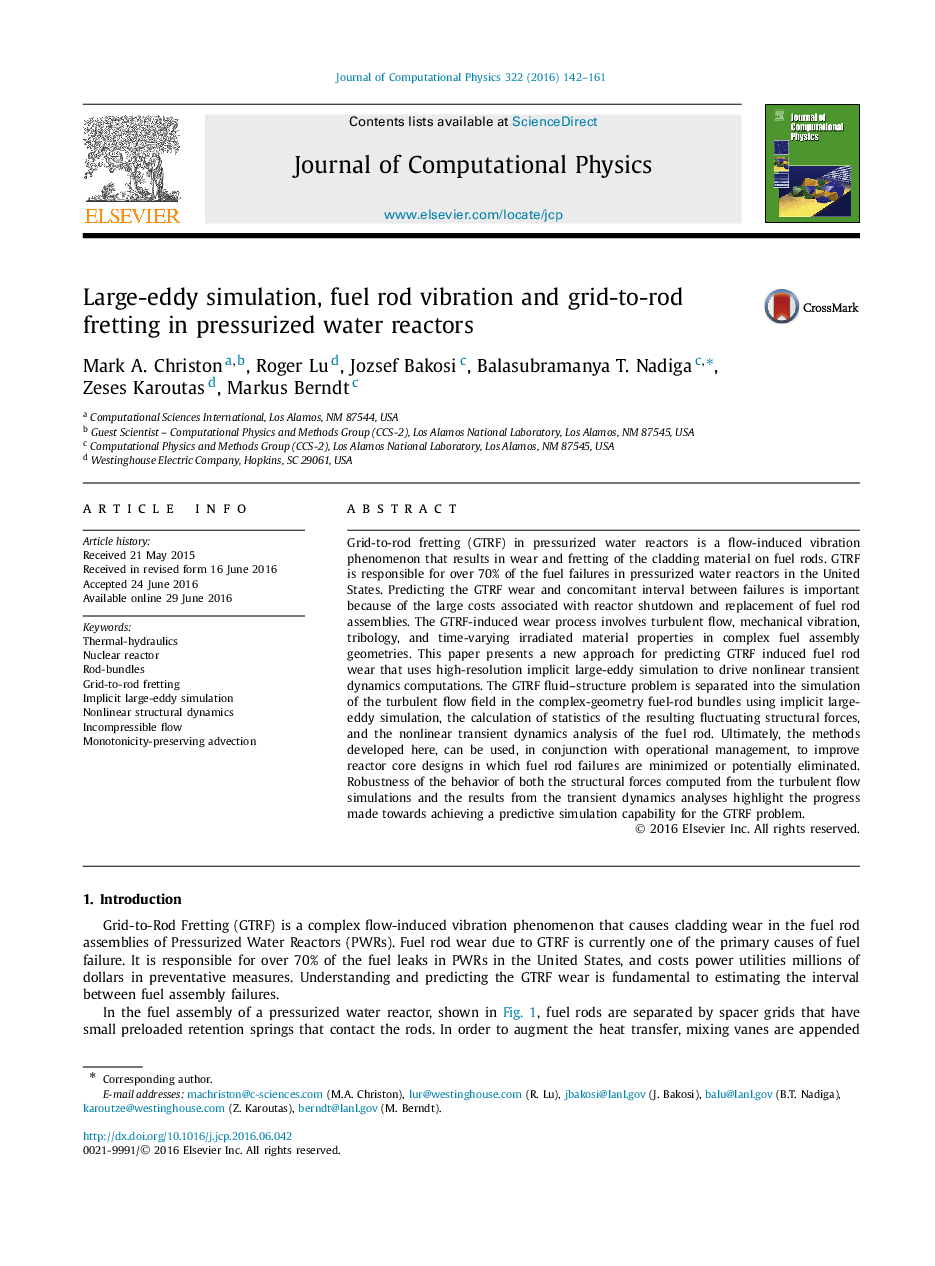| Article ID | Journal | Published Year | Pages | File Type |
|---|---|---|---|---|
| 6929698 | Journal of Computational Physics | 2016 | 20 Pages |
Abstract
Grid-to-rod fretting (GTRF) in pressurized water reactors is a flow-induced vibration phenomenon that results in wear and fretting of the cladding material on fuel rods. GTRF is responsible for over 70% of the fuel failures in pressurized water reactors in the United States. Predicting the GTRF wear and concomitant interval between failures is important because of the large costs associated with reactor shutdown and replacement of fuel rod assemblies. The GTRF-induced wear process involves turbulent flow, mechanical vibration, tribology, and time-varying irradiated material properties in complex fuel assembly geometries. This paper presents a new approach for predicting GTRF induced fuel rod wear that uses high-resolution implicit large-eddy simulation to drive nonlinear transient dynamics computations. The GTRF fluid-structure problem is separated into the simulation of the turbulent flow field in the complex-geometry fuel-rod bundles using implicit large-eddy simulation, the calculation of statistics of the resulting fluctuating structural forces, and the nonlinear transient dynamics analysis of the fuel rod. Ultimately, the methods developed here, can be used, in conjunction with operational management, to improve reactor core designs in which fuel rod failures are minimized or potentially eliminated. Robustness of the behavior of both the structural forces computed from the turbulent flow simulations and the results from the transient dynamics analyses highlight the progress made towards achieving a predictive simulation capability for the GTRF problem.
Keywords
Related Topics
Physical Sciences and Engineering
Computer Science
Computer Science Applications
Authors
Mark A. Christon, Roger Lu, Jozsef Bakosi, Balasubramanya T. Nadiga, Zeses Karoutas, Markus Berndt,
